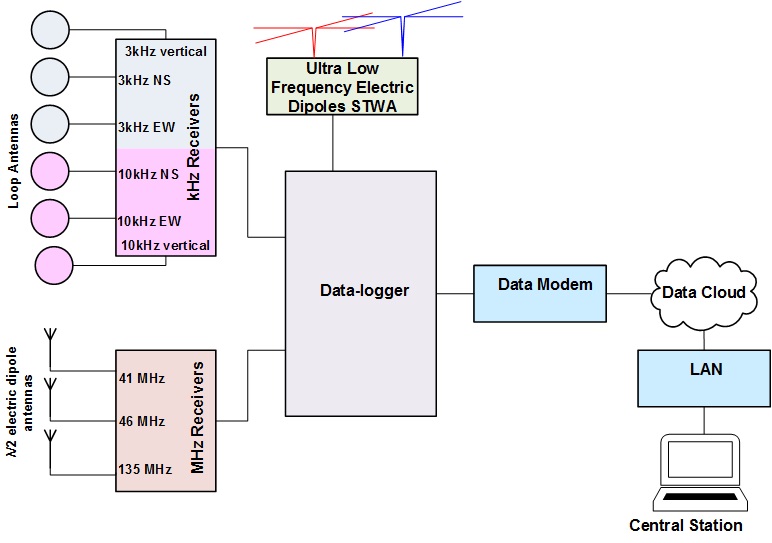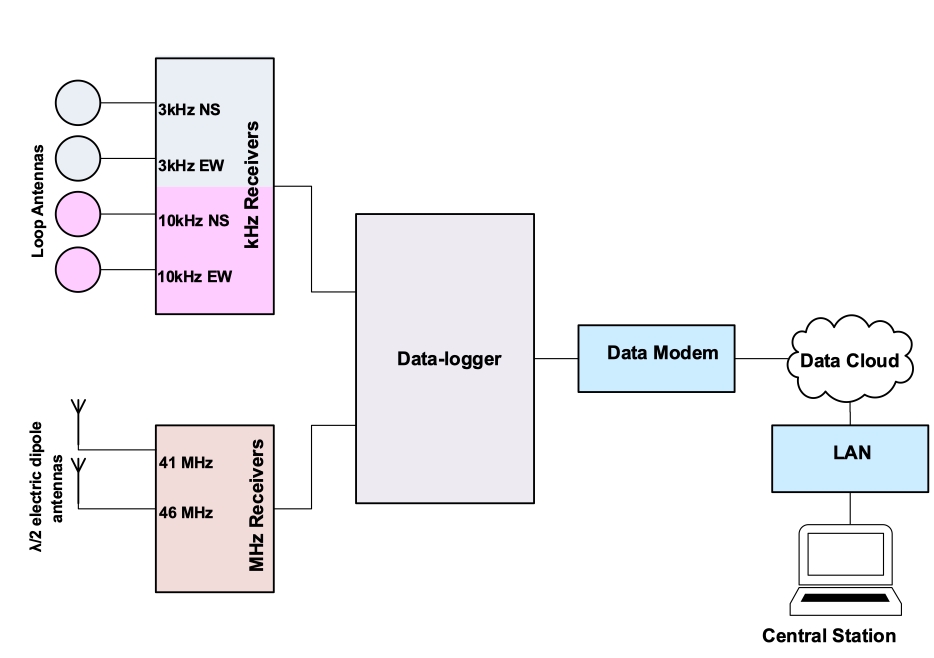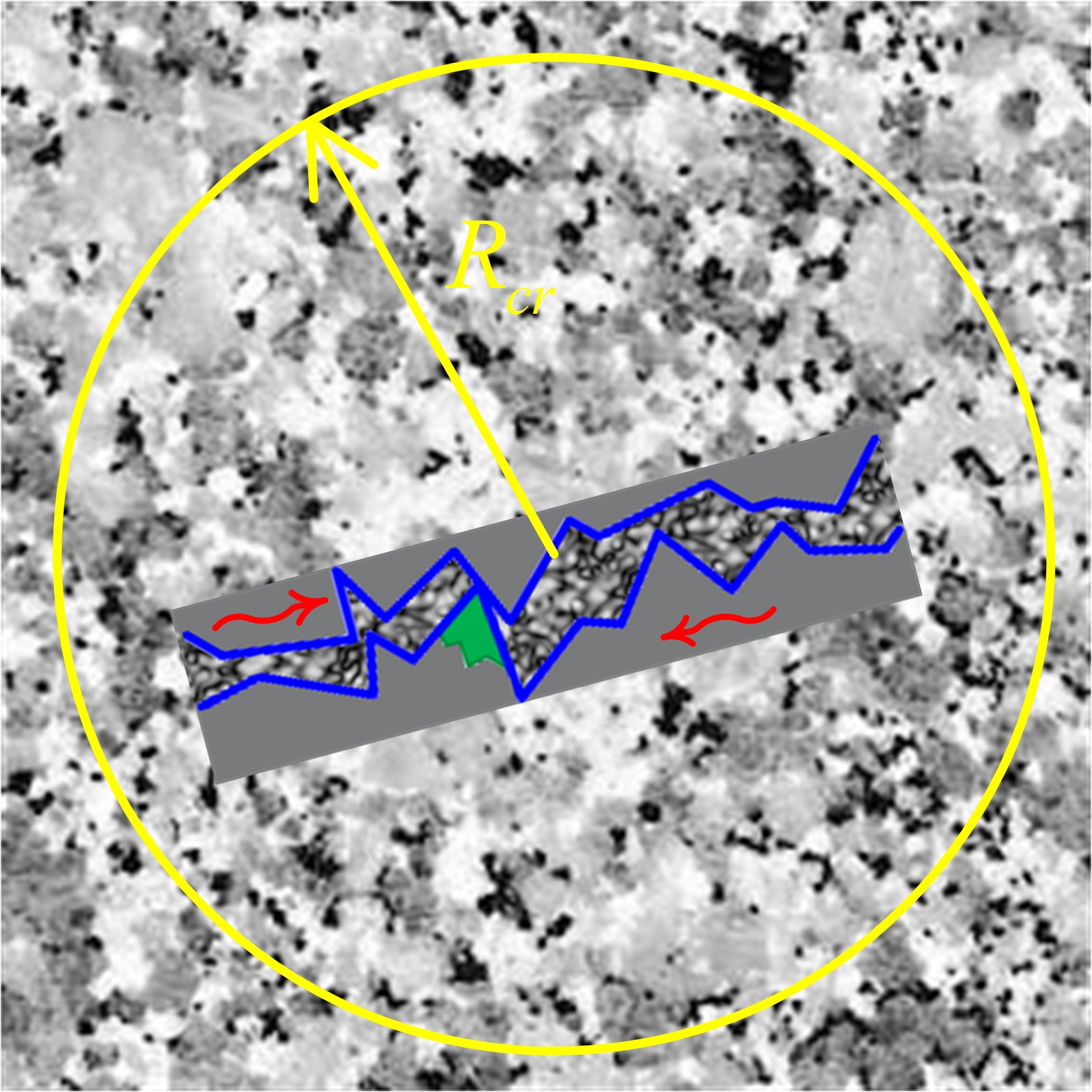
ELSEM-Net (hELlenic Seismo-ElectroMagnetics Network) is a network of telemetric stations spanning all over Greece for the monitoring of fracture-induced electromagnetic emissions, which is jointly operated by the Department of Electrical and Electronic Engineering of the University of West Attica (EEE/UniWA) and the Institute of Geodynamics of the National Observatory of Athens (NOA/IG), under a specific scientific agreement, with principal investigators Prof. Stelios M. Potirakis (EEE/UniWA) and Dr. Nikolaos S. Melis (NOA/IG).
The motivation
Fracture-induced electromagnetic emissions (EME), also known as electromagnetic radiation (EMR), in a wide frequency spectrum ranging from the kHz to the MHz bands are produced by opening cracks, which can be considered as the so-called precursors of general fracture.
Improvements in the
We consider earthquakes (EQs) as large-scale fracture phenomena. One cannot ignore the profound analogies between failure precursors at the laboratory and at geophysical scales. Thus, it has early been suggested that “the mechanism of EQs is apparently some sort of laboratory fracture process”.
On the other hand, it has been emphasized that it is often difficult to study the kinetics of brittle rocks’ fracture at the laboratory, due to the rapid unstable fracture growth in the last and more interesting stages. At the laboratory scale the fault growth process normally occurs violently in a fraction of a second. Therefore, crucial information probably is lost. A major difference between laboratory and natural processes is the
This has been the motivation of our reasearch over the past ~30 years.
The network
Based on this idea, during the time period 1992-1995, the first pilot network comprising of 4 remote telemetric stations for the recording of electromagnetic emissions in the MHz and kHz bands was deployed on the Island of Crete, south Greece by Prof. C. Nomicos, while since 1994, an exemplary telemetric station has been operating on Zakynthos (Zante) Island (Greece) under the guidance of Prof. C. Nomicos and Prof. K. Eftaxias, mainly aiming at the detection of
- The Zakynthos exemplary telemetric station has been installed in a carefully selected mountainous site in the southwest part of the island (37.76o N–20.76o E) providing low EM background noise. The measurement system is mainly comprised of (i) six loop antennas detecting the three components (EW, NS, and vertical) of the variations of the magnetic field at 3 kHz and 10 kHz, respectively, and (ii) three vertical λ/2 electric dipole antennas detecting the electric field variations at 41, 54 and 135 MHz, respectively. Moreover, two Short Thin Wire Antennas (STWA), oriented at EW and NS directions of length of 100 m each, have been installed. The last installation aims for the detection of a different type precursor, namely, ultra-low-frequency (<1 Hz) EM precursor rooted in a pre-seismic lithosphere-atmosphere-ionosphere (LAI) coupling. All the time-series are sampled at 1 Hz.
-

-
From 1995 to 1998 a reduced version of the above-mentioned system, recording only MHz and kHz EME (specifically: 3 kHz NS, 3 kHz EW, 10 kHz NS, 10 kHz EW, 41 MHz and 46 MHz) was used for the deployment of more telemetric stations which gradually formed a telemetric network spanning all over Greece, the ELSEM-Net (hELlenic
Seismo-ElectroMagnetics Network), that is in full unattended operation until now. All stations, excluding the Zakynthos station, of ELSEM-Net use the already existing field facilities (seismic stations) of the National Seismological Network of the Institute of Geodynamics, National Observatory of Athens (NOA/IG). The data from all stations are collected at the NOA/IG Center, and then transmitted to the Electronics and Computer Technologies Lab (ECTLab) of EEE/UniWA for storage and processing. The interactive map shows all the currently operating telemetric stations. -

More details on the instrumentation of the telemetric network can be found here.
Our research results
Our research, in an appropriately critical spirit, focuses on finding answers to the following crucial questions:
- How can one recognize a MHz or kHz EM anomaly as an EQ-related one?
- How can one link an individual MHz and kHz EM precursor with a distinctive stage of the EQ preparation?
- How can one identify precursory symptoms in EM observations which signify that the occurrence of the prepared EQ is unavoidable?
-
Are the
MHz-kHz EM precursors consistent with other precursors? -
Are the systematically observed preseismic EME characteristics, which are commonly considered as “puzzling features”, really “puzzling” ones or are they crucial precursory features of the EQ preparation process? Specifically:
(i) EM silence in all frequency bands appears before the main seismic shock occurrence.
(ii) Although strain changes are largest at the time of EQ, there are not co-seismic EME.
(iii) EM silence is also observed during the aftershock period.
(iv) Are the fracture-induced EME, if they really exist, detectable by ground-based observatories?
-

A fault (blue lines) is embedded in a heterogeneous environment. The MHz EME are emitted during the fracture of a disordered medium surrounding the major fault over a critical circle (yellow). The kHz EME are emitted during the fracture of the asperities (green highlighted area).
-
-
First stage: The initially observed MHz EM anomaly is due to the fracture of the highly heterogeneous system that surrounds the formation of strong brittle and high-strength entities (asperities) distributed along the rough surfaces of the main fault sustaining the system. The MHz EME can be described by means of a second-order phase transition in equilibrium.
-
Second stage: The appearance of tri-critical behavior in the final stage of MHz EME, or in the initial stage of kHz EME, or in both, signalizes a next, distinct, state of the EQ preparation process.
-
Third stage: The finally abruptly emerging strong sequence of kHz EM avalanches originates in the stage of stick-slip-like plastic flow, namely, the fracture of asperities themselves. The burst-like kHz EME does not present any footprint of a second-order transition in equilibrium.
-
Fourth stage: Finally, the systematically observed EM silence in all frequency bands before the time of the EQ occurrence is sourced in the process of preparation of the dynamical slip which results in the fast, even supershear, mode that surpasses the shear wave speed and corresponds to the observed EQ tremor.
-
Recently, we specifically focus on the extraction of as much as possible information that can result from the analysis of the MHz EME, such as the study of spontaneous symmetry breaking (SSB) and
This is an ongoing research, continuously testing the above-mentioned hypothesis of FSMEG and examining new aspects of the involved processes that could enhance our understanding of EQ preparation as reflected to the observed fracture-induced EME, as well as other
The full list of our relevant publications can be found in the corresponding section of this site.